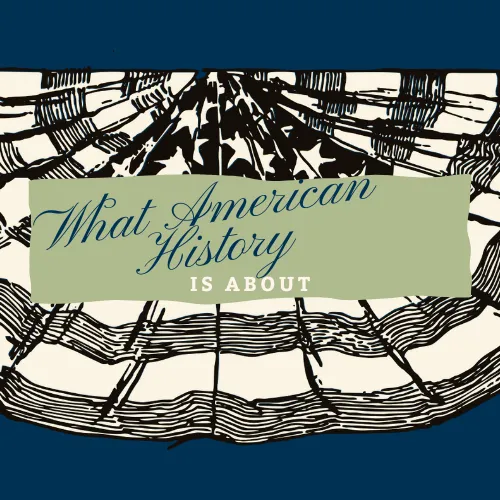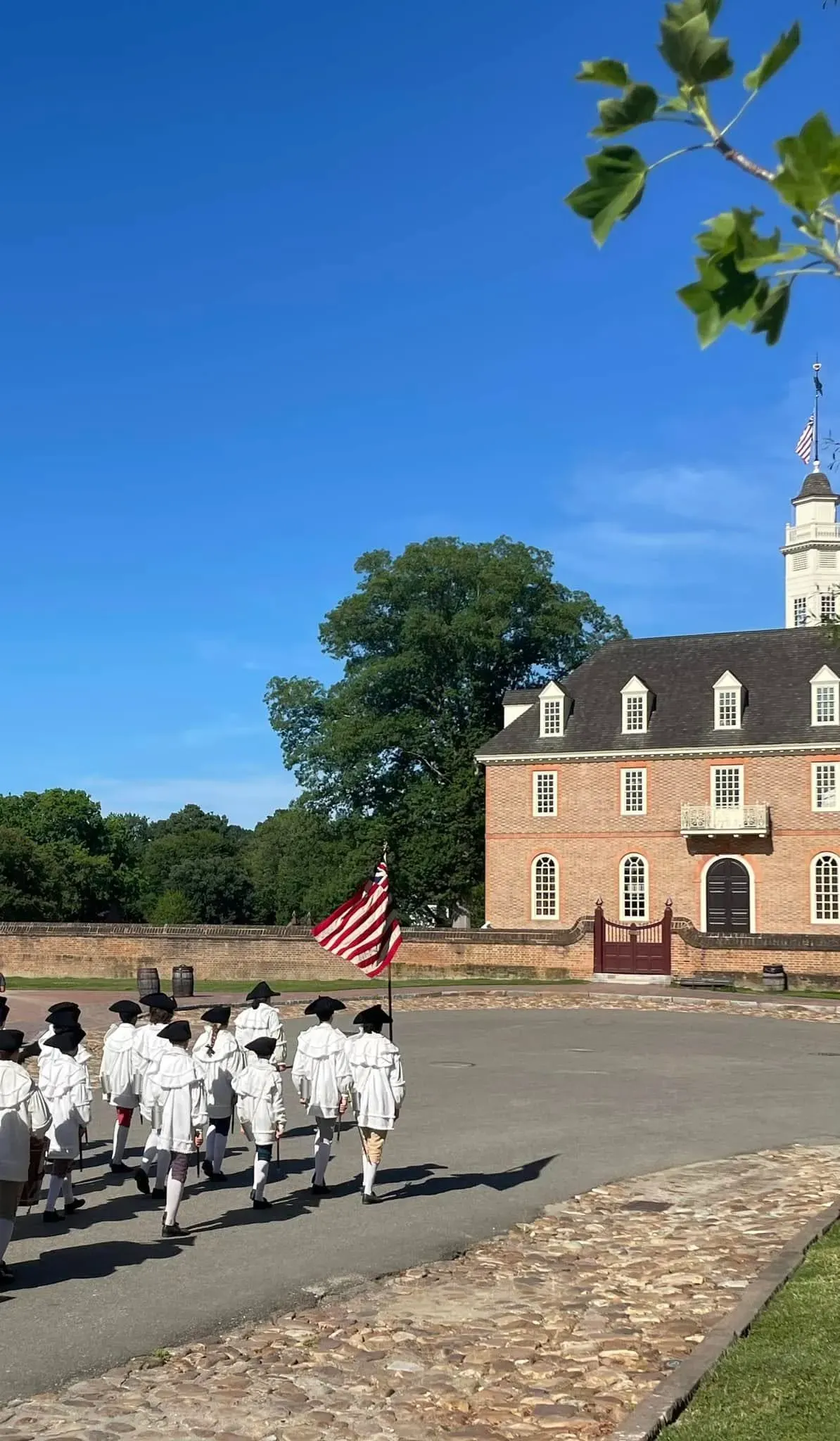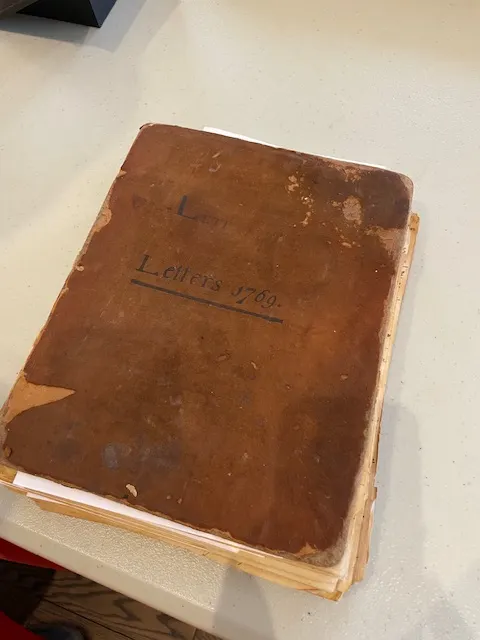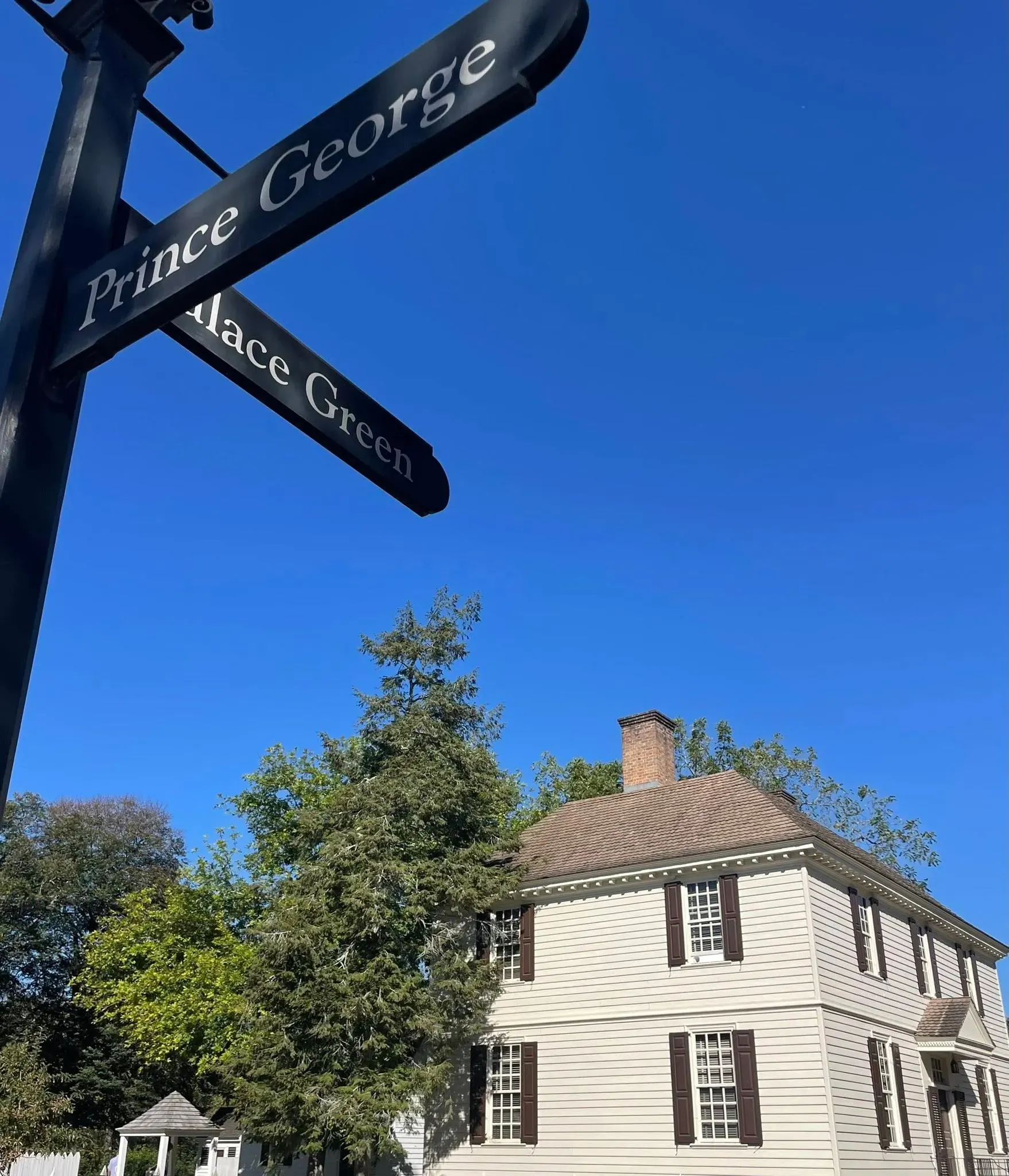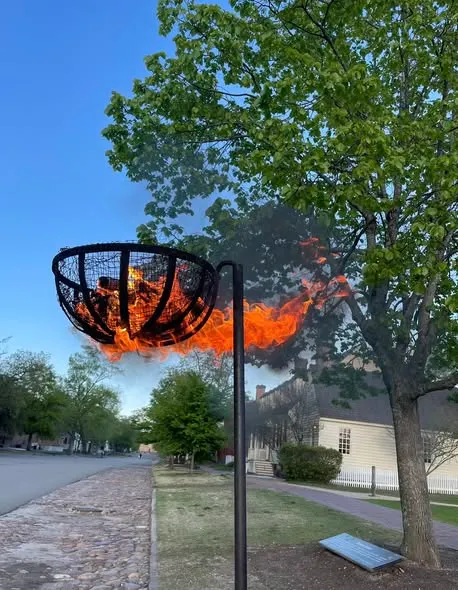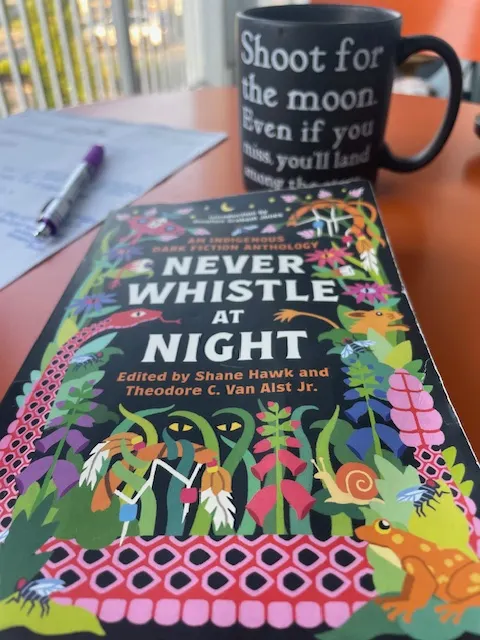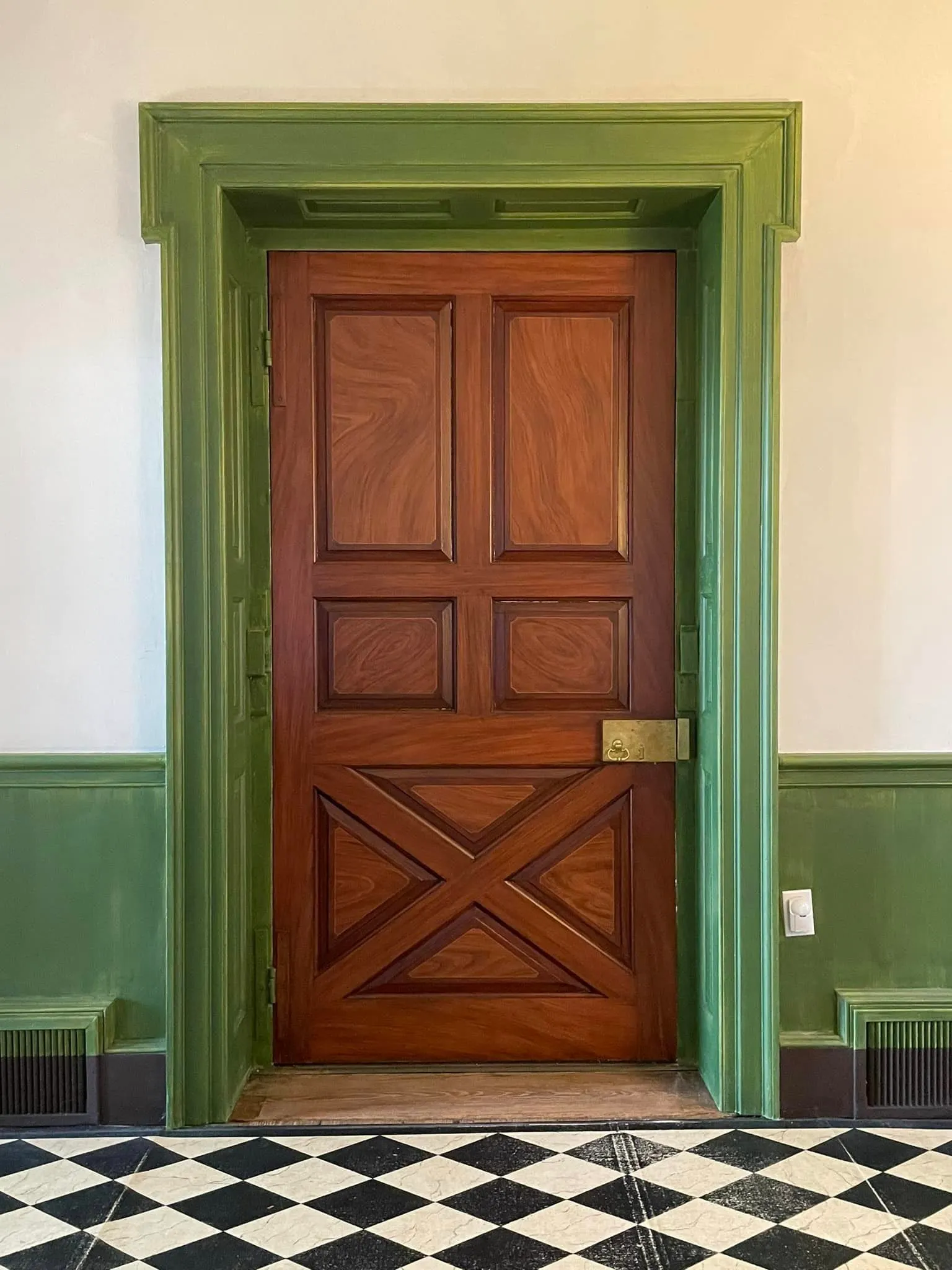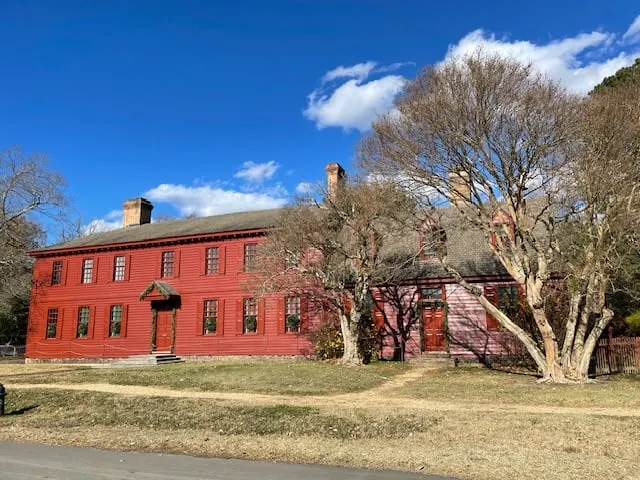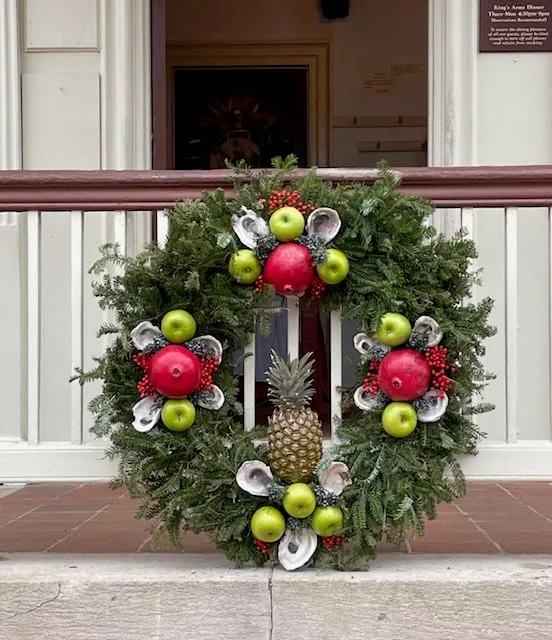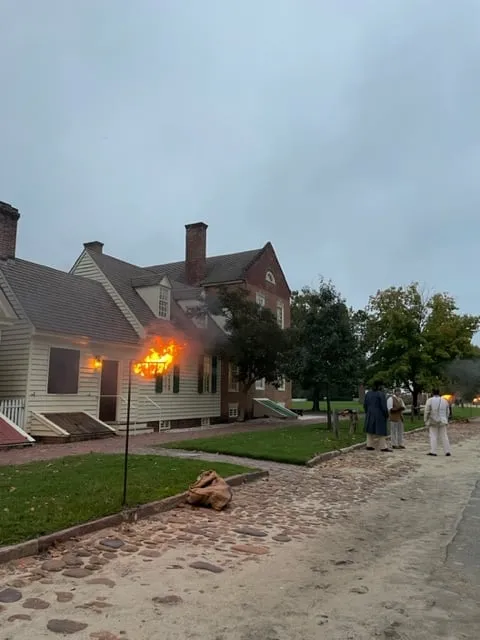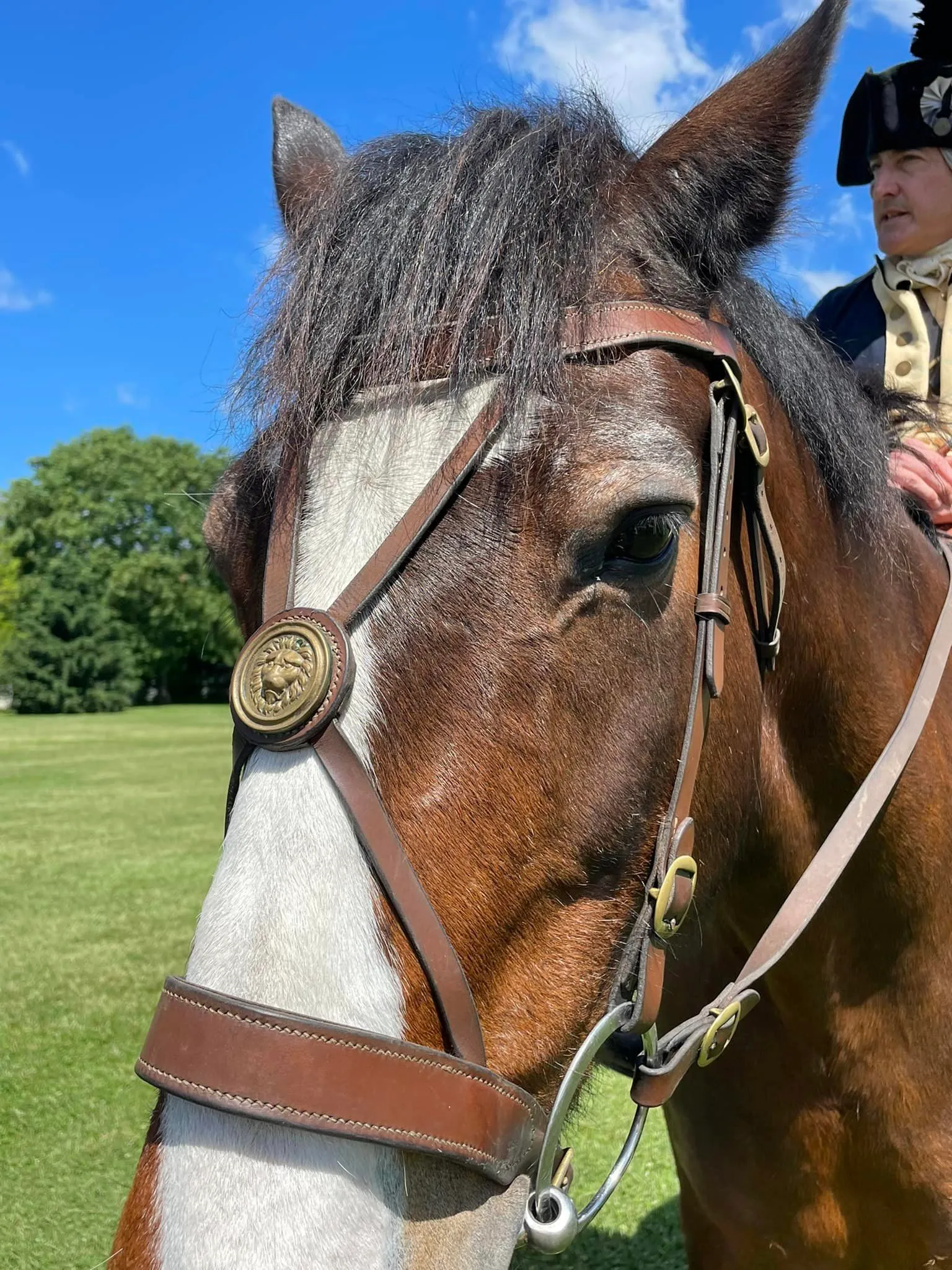Leather Breeches to Blue Jeans: Everyday Pants in American History
Learning about history from pants.
From textiles used to the actual styles worn, clothing is an integral part of learning history. Truly. And if you want to know about what people wore to work in the past, I can give you a snippet of American history based on pants.
As most of you following along know by now, my passion is early American (Colonial) history and today I'm starting there. With leather breeches.
Disclaimer: As a blogger, I use affiliate links sometimes! I may receive commission from purchases I share; it does not change your price but sometimes you might get a discount.
Interpreting history means wearing the right clothing.
As I wander Colonial Williamsburg (CW), I'm always impressed that everything done here is "real" as Master Farmer Ed Shultz mentioned this morning when a visitor asked about having "real sheep" in Ewing Field.
This is a living history museum after all - the largest in the world at this time.
So why wouldn't the clothing be authentic? It is. When you see Ed, any of our Nation Builders or tradesmen around town, they're wearing exactly the type of clothing that would've been worn in Williamsburg in the 18th century. That goes for our American Indian interpreters and those portraying the enslaved.
Leather breeches were so common, such a vital part of the literal fabric of American workers, we have a trade shop that is focused on it. The master and apprentices make leather breeches, as well as repair and clean them, for their colleagues around the museum.
From the blacksmiths to actor historian Daniel Cross, portraying Colonel Washington, you'll see their exemplary work.
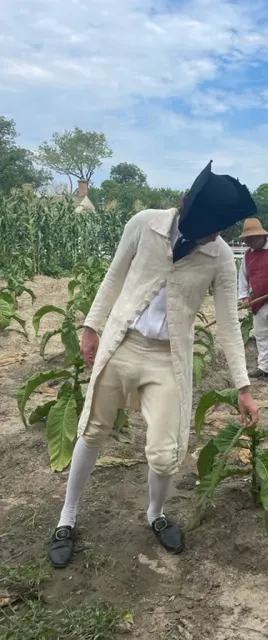
Daniel Cross at Ewing Field.
I've learned some pretty cool stuff from our leather breeches tradespeople.
- Leather breeches start a buttery yellow that fades in the sun. Typically they weren't dyed but when they get overly dirty, our leather breeches team have used logwood to get to a darker color. Logwood, by the way, is also used by our Dye and Weave Shop to make a purplish color yarn. I purchased a skein for a friend that knits.
- Have you heard about a boy being breeched? I asked at what age children started wearing leather breeches. In the past, males wore gowns and around 4-6 years old moved into "breeches." Thus the term. Read more here.
- While wealthier colonists may have dressed in more expensive textiles for evening wear, if they were riding horses, sport-hunting, or mucking around their property, you'd find them in leather breeches.
- Leather breeches were both imported from England to the Colonies (as most clothing) and made on this side of the ocean.
- The most common leather used: deer (both doe and buck) as well as caribou.
I've embedded a video of CW's Emma Cross. (Side note: Emma is Daniel's sister and their passion for history is contagious!)
Our CW tailor shop creates clothing from start to finish.
Why? To keep history alive. To ensure we know the craft itself.
Beyond the specialty of leather breeches, other "everyday" and "work" clothing were made by tailors. One thing that always amazes me: that people from every walk of life, every social status, all went to the tailor shop. Like I mentioned about the mantuamaker in this post, the tailor measured every customer- all clothing was bespoke. Whether it was daily wear or for a special occasion.
Of course, there were exceptions. Example: the special order for the boys of the Brafferton Indian School. (you can see the order by scrolling through this article).
Taking it a step further, CW even weaves the fabric used around the museum. The Dye and Weave shop is in the process of creating a blackwatch Scottish tartan one of our military interpreters will be making into a uniform.
And, of course, we have a costume design center to ensure CW employees are dressed according to primary source references. We even have a textiles lab here to study fabric across all uses, not just clothing.
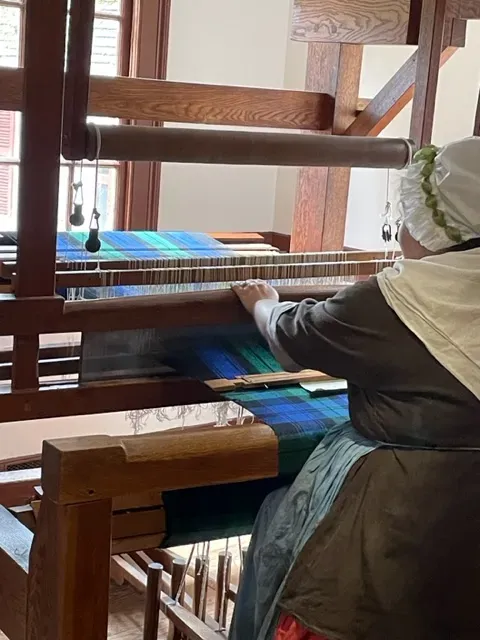
Blackwatch tartan in the loom.
The late 19th century brought us the blue jeans still worn today.
The early 19th century brought machine-woven cotton to the forefront for a period. But then... how did blue jeans get started as the popular choice for work pants? A tailor in Nevada didn't have anything durable enough to sell the miners.
Jacob Davis contacted Levi Strauss, a German immigrant living in San Francisco, and the two of them made history. They started a movement transitioning American "everyday" working wear from heavy woven cloth to the blue jeans we know today.
The color is similar to the leather breeches dyed with logwood!
Read the story of blue jeans on the Smithsonian's website here.
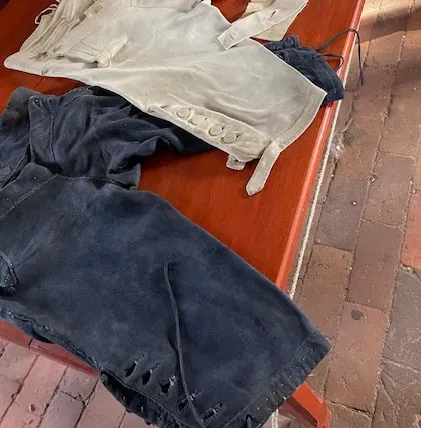
Leather breeches dyed with logwood
The reality of 21st century life in America: wear what works.
Nowadays, we all go well beyond breeches or blue jeans for work-pant options. However, one thing is certain: Americans are STILL focused on comfort and practicality when it comes to work pants.
As a corporate type who spent most weeks in the air, driving around in rental cars, and even on trains once in awhile, the wrinkle-free "dressy" stuff were go-to outfits for me. Mix in some logo'd shirts and jackets and my typical ensemble was completed.
When I worked in healthcare, the team loved everything about scrubs as work-wear. From the comfort to the ease of deciding what to wear (no need!), they were pretty well-loved at my office.
With the 2020 pandemic and introduction of Zoom into our lives, I know you know that pajama bottoms probably happened more often than not during the workday right? LOL
If you have some specific clothing history you'd like shared, let me know! And if you have a story to share about textiles, uniforms, outfits, or fashion- please share!
Today's closing words from history.
Colonel Moylan is seeking approval to purchase high quality leather breeches for the 4th Regiment - clearly he believes morale will go up and they'll be able to perform their duties well. Click here to read with citations on Founder's Archives.
To George Washington from Colonel Stephen Moylan, 5 November 1779
From Colonel Stephen Moylan
North Castle [N.Y.] Novr 5th 1779
Dear Sir
I have received Coats and waistcoats for the 4th Regiment, and am just now informed by Captain Hunter of Bedford1 that he has as many pair of Leather breeches of the best quality as will cloath the Regiment which he will part with, if your Excelly will be pleased to give me an order I will purchass them from him on the best terms I can—if I have your approbation for procureing the breeches and an order for Shirts, Stockings & boots—the men will be enabled to Keep the field and I am convinced, will do as much duty if not more, than any equal number of men in the Service.2 I have the honor to be Dear Sir Your Most Ob. H. St
Stephen Moylan
Are you enjoying the blog? Use my online tip jar and buy me a coffee:
There is a huge practical disclaimer to the content on this blog, which is my way of sharing my excitement and basically journaling online.
1) I am not a historian nor an expert. I will let you know I’m relaying the information as I understand and interpret it. The employees of Colonial Williamsburg base their presentations, work, and responses on historical documents and mainly primary sources.
2) I will update for accuracy as history is constant learning. If you have a question about accuracy, please ask me! I will get the answer from the best source I can find.
3) Photo credit to me, Daphne Reznik, for all photos in this post, unless otherwise credited! All photos are personal photos taken in public access locations or with specific permission.
